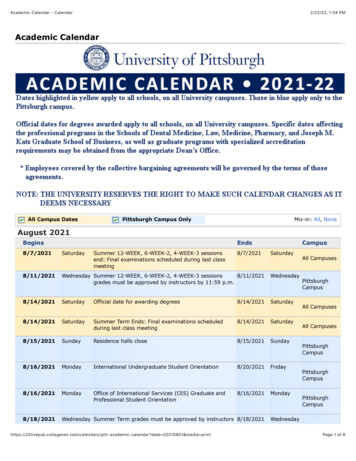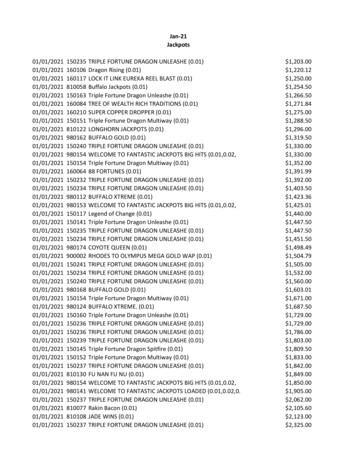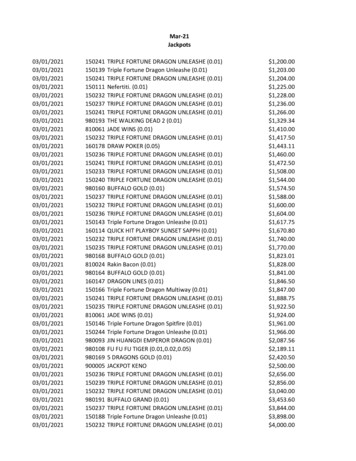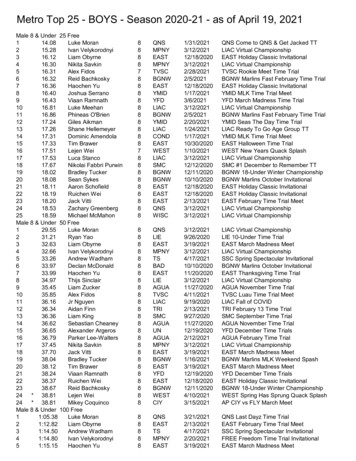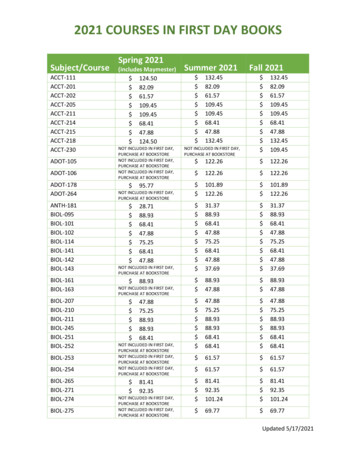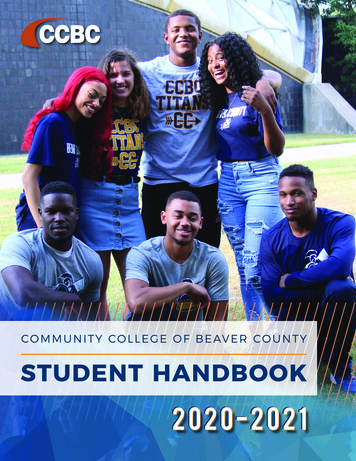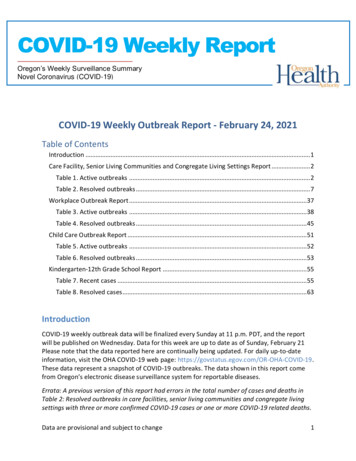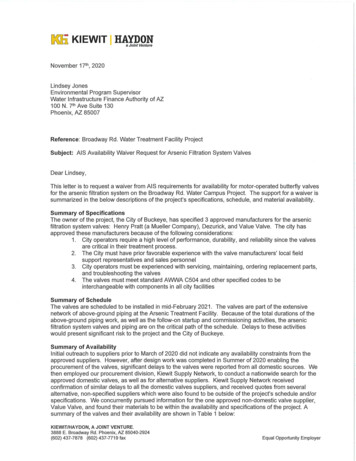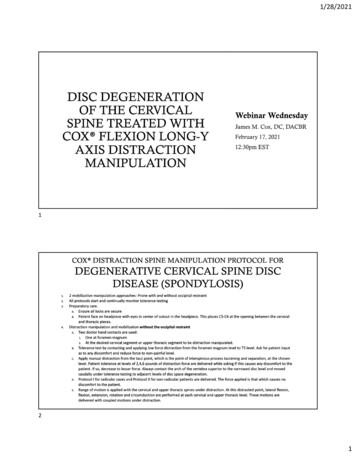
Transcription
1/28/2021121
1/28/2021342
1/28/2021563
1/28/2021784
1/28/20219Jun P, Page I, Vette A, KawchukG: Potential mechanisms forlumbar spinal stiffness changefollowing spinal manipulativetherapy: a scoping review.Chiropr Man Therap. 2020 Mar23;28(1):15. doi:10.1186/s12998-020-00304-x.105
1/28/202111126
1/28/202113147
1/28/2021ortextbook www.coxtrc.com15168
1/28/202117189
Webinar WednesdayFEBRUARY 17, 2021COX DISTRACTION SPINE MANIPULATION PROTOCOL FOR DEGENERATIVE CERVICALSPINE DISC DISEASE (SPONDYLOSIS)1. 2 mobilization manipulation approaches: Prone with and without occipital restraint2. All protocols start and continually monitor tolerance testing3. Preparatory care.A. Ensure all locks are secureB. Patient face on headpiece with eyes in center of cutout in the headpiece. This places C5-C6 at theopening between the cervical and thoracic pieces.4. Distraction manipulation and mobilization without the occipital restraintA. Two doctor hand contacts are used:1. One at foramen magnum2. At the desired cervical segment or upper thoracic segment to be distraction manipulated.B. Tolerance test by contacting and applying low force distraction from the foramen magnum level toT5 level. Ask for patient input as to any discomfort and reduce force to non-painful level.C. Apply manual distraction from the taut point, which is the point of interspinous process tauteningand separation, at the chosen level. Patient tolerance at levels of 2,4,6 pounds of distraction forceare delivered while asking if this causes any discomfort to the patient. If so, decrease to lesserforce. Always contact the arch of the vertebra superior to the narrowed disc level and movedcaudally under tolerance testing to adjacent levels of disc space degeneration.D. Protocol I for radicular cases and Protocol II for non-radicular patients are delivered. The forceapplied is that which causes no discomfort to the patient.E. Range of motion is applied with the cervical and upper thoracic spines under distraction. At thisdistracted point, lateral flexion, flexion, extension, rotation and circumduction are performed ateach cervical and upper thoracic level. These motions are delivered with coupled motions underdistraction.5. Distraction manipulation and mobilization with the occipital restraintA. Place the occipital restraints on the patient, asking for any discomfort and affording appropriateattention to any complaint.B. 2 applications of distraction can be delivered with the occipital restraint in place:1. Contact the spinous process of the vertebral segment to be distracted and apply long y axisforce while moving the headpiece cephalward. This includes the foramen magnum when itis distracted.2. Contact the spinous process inferior to the vertebral segment to be distraction and apply acaudad force as the headpiece is moved cephalward.3. Protocol I is delivered as described in points 1 and 2. Protocol II is given while distraction isapplied and lateral flexion, rotation, flexion, extension, and circumduction are performed.4. Doctor hand force can decrease of increase lordosis as deemed appropriate.5. Appropriated electrical stimulation can be applied to trigger points before or afterdistraction manipulation.6. Ultrasound, acupuncture, gua sha, vibration, heat or cold, or other modalities as deemedneeded are given.James M. Cox, DC, DACBRdeveloper of Cox Distraction Spine Mobilizing Manipulation
distraction. 5. Distraction manipulation and mobilization with the occipital restraint A. Place the occipital restraints on the patient, asking for any discomfort and affording appropriate attention to any complaint
